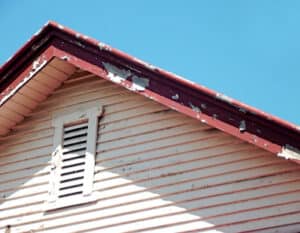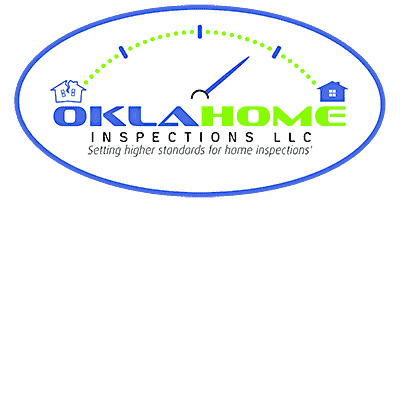
12 Nov 8 Red Flags When Touring a House For Sale
Touring Homes To Buy? Watch Out For These 8 Red Flags
The home-buying process can be equally fun and stressful. After all, a home is likely the most expensive and important purchase you’ll ever make. But while you might be caught up in visions of your future life inside a new home, it’s important to keep your head on straight and avoid making any hasty decisions. To help guide you through the process and prevent you from making a bad investment, look for these 8 red flags when touring a house for sale.
- The home is in poor condition
- The neighborhood is not safe
- The schools/grocery store/ etc are far away
- The home is overpriced
- The home is in a flood zone
- There is water or fire damage
- Other homes nearby have been on the market for a while
- It doesn’t pass an inspection
Now that we know what red flags to look for, how do we know when these things are present and an issue? Throughout this article, we will break down each of these 8 flags to look for before you buy a home so you are prepared!
The Home Is In Poor Condition
While this may seem obvious, you’d be surprised how many people overlook poor conditions and decide to buy a home anyway. People tend to think a few small repairs is fine to take care of. While this may be true, if there are “small repairs” all over the house- they can easily add up both in terms of money and time. This can especially happen when you’re looking at old homes. Some forms of wear are perfectly normal and can easily be updated or restored. However, some things you should look for include:
- Foundation damage
- Broken windows
- Cracks in the walls or ceilings
- Mold or mildew growth
- Water stains
- Roof damage
- Old wiring and/or plumbing
These are just a few examples, but if you notice any of these things it’s important to get a professional opinion before making an offer on a home. If you are fine tackling a fixer-upper then go for it! Just be aware that sometimes a small problem can often turn into a bigger one.

The Neighborhood Is Not Safe
When looking at a neighborhood that you’re considering moving to, it’s important to do your research and make sure it is somewhere you feel comfortable. Here are a few things you can do to get a feel for the safety of an area:
- Look up the crime rates online
- Drive around and take note of how well-lit and maintained the area is
- Talk to the locals/neighbors
- Look up the home on sites like Zillow, which often have a safety score for the area
If safety is a big concern for you, it’s best to err on the side of caution and find a neighborhood that makes you feel more comfortable. This is also a good thing to consider if you plan to resell the home in the future.
The Home Is Not “Local”
This is more of a personal preference, but it’s something to think about nonetheless. If it’s important to you to be close by to conveniences like the grocery store, schools, and your workplace then you’ll want to factor that into your decision. The last thing you want is to be an hour away from everything! While it may not seem like a big deal at first, this can often become frustrating and inconvenient. Although you may not be able to find a home that is central to everywhere you go, you can choose what’s most important for a short commute.
In addition to this, it’s a good idea to look into traffic in your area. Is your prospective home on a busy street? Is it close to a noisy freeway? These are the sort of things people often don’t think about or realize until after they’ve started to live there and it’s too late. So when touring a house for sale, don’t forget to consider its location.
The Home Is Overpriced
It’s important to be aware of the market value of homes in the area you’re interested in. This will help you determine whether or not a home is overpriced. The reason this is a red flag is that it could signify that the sellers are desperate or trying to take advantage of buyers. In a market where there are many homes for sale, you’re more likely to find a fair price. But in a seller’s market, it’s important to be cautious of overpriced homes.
A good way to tell if a home is overpriced is by looking at the listing history. If the home has been on the market for a while and the price has been reduced multiple times, there’s a good chance the sellers are getting desperate. Another thing to look for is homes that are priced much higher than similar homes in the area. If you’re not sure what a fair price is, it’s always a good idea to consult with a real estate agent. Keep in mind that just because a home is overpriced doesn’t mean you can’t negotiate the price down. However, if a home is significantly overpriced it may be best to move on and look elsewhere.

The Home Is In A Flood Zone
This is an important one to consider, especially if you’re looking at homes in coastal areas. If a home is in a flood zone there’s a chance it could be damaged by a flood. This is something that’s often not covered by insurance, so it’s important to be aware of the risks before making a decision. The best way to find out if a home is in a flood zone is by looking up the property on FEMA’s flood maps. If the home is in a high-risk area, it’s best to move on and look at other options.
The Home Has Water Or Fire Damage
Homes that have been damaged by water or fire can often be a great deal. However, they also come with a lot of risks. It’s important to be aware of the extent of the damage before making an offer on a home. If the damage is extensive, it may not be worth the headache or the money to fix it.
If there was a flood or fire in the home at some point that the homeowners repaired, you will want to make sure it was fully repaired and correctly. This is something that should be checked by a professional home inspector before you make an offer on the home.
Nearby Homes Are Not Selling
This is a red flag that you should take into consideration when looking at homes. If nearby homes are not selling, it could be an indication that there is something wrong with the area. Whatever the reason, it’s something you’ll want to look into before making an offer on a home.
The best way to find out if homes in the area are selling is to talk to a real estate agent. They will be able to tell you how long homes are staying on the market and if there have been any price reductions. This information will help you determine if there is something wrong with the area or if the market is just slow.

The Home Doesn’t Pass Inspection
The final red flag we’ll discuss is if the home doesn’t pass inspection. This is something that can often be negotiable, but it’s still a red flag. If there are major issues with the home, it may be best to move on and look at other options. You can always consult with your home inspector about the issues to see if it’s things that can be easily fixed.
In conclusion, these are the top 8 red flags you should be aware of when looking at buying a home. If you’re not sure about a home, it’s always a good idea to consult with a real estate agent and a home inspector. They will be able to help you determine if the home is a good deal or if you should move on and look at other options. Thanks for reading our article today, please share it!
Related Questions
What if the home I am selling has red flags?
If the home you are selling has red flags, it is important to be honest with potential buyers about the issue. If you try to hide the problem, it could come back to bite you later down the road. It’s always best to be upfront about any issues with the home so that buyers can make an informed decision.
Is a home inspection worth it?
A home inspection is always worth it, even if the home doesn’t have any red flags. It’s a good way to get peace of mind and to make sure there are no hidden problems with the home. If there are issues, a home inspection can give you bargaining power when negotiating the price of the home.




Sorry, the comment form is closed at this time.